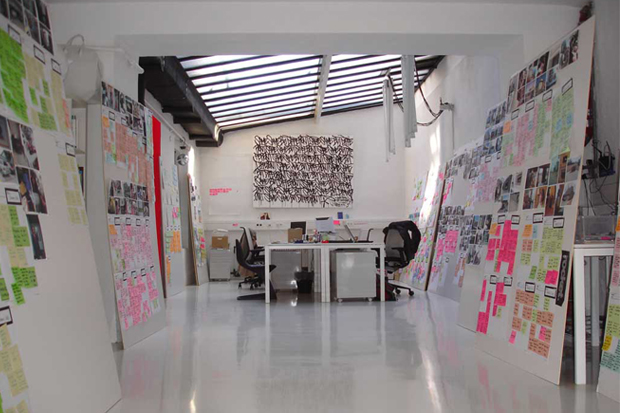Markos Grohmann and Martin Hoenle from Munich-based design and innovation consultancy, gravity, list their eight key principles for designing service experiences.
Services define the core of Western economies, as the majority of today’s businesses are based on services. However, companies have only recently started to take a systemic and holistic approach to developing and designing services.
The following guidelines outline gravity’s approach to service design through applying design thinking in collaboration with its clients. The principles outlined below are formed by many years of service design practics for clients such as Audi, Coca-Cola, ThyssenKrupp, Scout Group, BBVA, Otto Group and ZLB.
Co-define the common ground
When commencing a new service project, it is highly important to jointly define a common understanding of its scope, and to agree on definitions and mental models – among the team and with clients.
A service can be explained as the meeting of a service user or consumer and a service provider. This service relationship is formed through the combination of multiple touch points: human contact, physical space, digital interactions, brand communication, etc. The emphasis and role of these touch points may change over time and circumstances, depending on user needs.
Re-connect to the physical
The understanding of the touch points that shape the service relationship leads to one of the most common misconceptions – the belief that offering new services means leaving the physical realm and expecting a completely new set of rules to apply. Even if the product offered is of intangible nature, eg the cost structure of a mobile network provider, there is always a physical touch point, such as a printed invoice, allowing users to connect to the service. No service is truly intangible.
Build on true strengths
To some extent, every company is experienced in offering services. For example, a car manufacturer is also proficient in offering financial services, sales services in dealerships and car repair services. If the core expertise lies in manufacturing cars and the corresponding peripheral services, this should define the starting point of the service strategy.
Define the service DNA
Just as most organisations have established practices for defining their brand values or corporate identity, it is essential to frame the future service experience.
Surprisingly, many organisations offering services every day have never aligned the feel of their own services. To capture the complex and lucid nature of services, gravity has developed the Service DNA tool that defines the value, look and feel, and character of the service.
Create relevant service tools
When designing services, gravity uses a co-creation approach, which involves executive level decision makers, front- and back-end staff, as well as operational managers, to contribute at the research stage. Their insights are used in different stages and distilled into relevant service design tools such as service journeys, blueprints, frameworks or stakeholder maps.
Involve the right people
Due to the complex and systemic nature of services, decision-makers can extend to various corporate departments. As most firms do not have overarching service divisions, getting the relevant people at the same table can speed up crucial decision time as well as define the development of the project.
Make the service real, at every step of the process
By prototyping the developed touch points, team members have the chance to experience new services first-hand. Staging rather complex new services with simple mock-ups helps to identify key moments in a service experience, and lets the team quickly evaluate existing hypotheses and alternatives. By keeping it as real as possible, iterative feedback is constantly included in the process. At later stages, formative research with consumers is used, with outcomes playing back into the design process.
Don’t stop designing
It is not enough to deliver glossy presentations at the end of a service creation project. True service innovation needs successful implementation. To make sure the original design intent is carried out, gravity accompanies and supports the implementation process from a service design perspective, providing stakeholders with everything necessary - from implementation plans to feedback to new design iterations that take previously-unknown constraints into consideration.
If the implementation of the new service sets a challenge, consistently executing the new service experience can prove to be even more demanding. To make sure the service DNA is carried out throughout all service functions and channels, it is essential to create an understanding of how service quality can be measured over the long-term, to be able to provide a continuous positive service experience for customers.
gravity is a design and innovation consultancy, founded in 2008. The company’s team has formal training and years of experience in product, service, interaction, communication and graphic design, qualitative research, ethnography, engineering and business strategy. gravity’s offices are located in Munich, with its clients and projects based in the US, China and around Europe.



